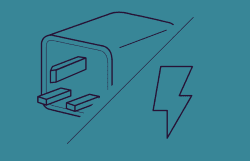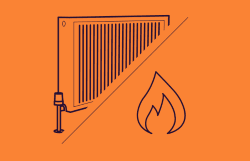Here, we instantly calculate your electricity bill online with no personal information. We are driven in our goal of helping you easier organise and understand your charges; whether you are concerned about being overcharged, want to work out your bills in advance, or simply wish to understand your monthly or quarterly meter readings.
While your supplier will be able to tell you how much electricity you use, sharing your meter reading with us should bring similar results, faster, and encourage us to estimate your monthly costs and compare against other leading brands to ensure that you are only paying what you have to, and are using the correct tariff for your needs.
While other UK suppliers may make this information difficult to find, we aim to put all of what you need in one place, and on one page, so you can keep coming back and avoid being left with even more questions.
Here, you can find a step by step guide of how to determine what type of meter you have, how to read it, and how to save your hard earned money on bills.
Many suppliers calculate their charges slightly differently, you can find a
What makes up your electricity bill?
What you pay for your energy at the end of each month or quarter is calculated using the following elements:
- How much energy you’ve used in kWh multiplied by the cost of electricity on your tariff
- Any Standing charges
- CCL – Climate Change Levy
- VAT
- Discounts
Energy usage
This is the amount of energy that you’ve used in the period. Most commercial suppliers bill on a monthly basis, although smaller sites may be billed quarterly. The calculator below will help you to work this out.
Unit rates
This is the price (in pence) of your electricity, per kilowatt hour (kWh). The cost per unit differs across the country and for different tariffs. It used to be the case that you’d be charged a higher price for the first tranche of units used and a lower price after a certain threshold, known as ‘two-tier pricing’. But this was banned and energy suppliers have phased it out.
Unit prices vary between suppliers, across regions and over time. Payment method and credit rating can make a difference too, which makes it extremely tricky for businesses to compare prices for their energy.
Standing charges
These are fixed costs charged by your supplier for being connected to the electricity network and for servicing your account – they are not affected by how much energy you use. The majority of energy suppliers charge these fees at a daily rate, SSE being the main supplier that doesn’t. Standing charges vary depending on which tariff you are on, the region you live in and how you choose to pay your bills and when you agreed to the contract.
VAT
The standard rate of VAT on electricity is 20% but, charities and some other sites may pay a reduced rate of 5% on energy. This is also added onto our bills.
Discounts
As an incentive to get your custom and be paid in the way they’d like, energy suppliers offer discounts to customers on their bills. The most common discounts are paying by direct debit (because it means you won’t miss a payment), and managing your account online (as it saves the supplier in administration costs).
Your Meter, and how to read it
Where to find your meter will vary depending on your property, but checking under the stairs, close to your front door, and even in a basement are good places to start.
Your landlord or letting agent should have this information, as well as the last reading taken before you entered the property- Be sure to take a reading when you move into a new property to be sure that you are not charged for any units you did not use.
If you are in a shopping mall, office complex or industrial estate, your electricity meter may be found in a communal space, with numbers indicating each unit to its specific meter. Your electric meter should be a square-shaped box on a wall, often on an LCD display. Older meters can be black or silver with clock style dials on the front or tickers, just like the mileage gauges in older cars. If you cannot find your meter in your property, it might help to ask your neighbours for more information.
Although your provider should be taking your meter reading for you, you are able to take your own readings. Supplying your own meter reading online gives you the potential to avoid estimated bills or building up credit.
Bills are built by taking readings in order to convert them into kilowatt hours (also known as units, or shortened to kWh), which is then used to establish your charge.
A kilowatt (KW) is 1,000 watts of electricity. A kilowatt hour (kWh) is 1,000 watts of electricity consumed for 1 hour. Knowing this, we can understand that 50KWh is the equivalent of 1,000 watts for 50 hours, or 5,000 watts for 1 hour.
Alongside this, one unit of electricity is equal to 1KwH.
Many organisations suggest calculating your bills in a handful of simple steps;
Firstly, keeping a note of your previous readings will be useful to help you calculate how much you use each month, so remember to subtract the previous reading each time you take a new one.
No matter what kind of meter you have, you can start by taking a note of the first five numbers, from left to right.
If you have a new meter, or a smart meter, it is most likely displayed on the meter, a separate screen or via an app.
Your energy meter should always be read from left to right, ignoring any digits in red. It could be useful to provide any zeros in your reading that are not showing in red, though.
Your electricity meter number is easiest to find on a previous bill.
If you have a smart meter, your meter should send your usage and readings directly to your energy supplier in order for them to calculate your bill. This is done via a 3G SIM card that should be explained to you on installation. You should still take meter readings regularly to ensure that your meter is not prone to errors.
Lastly, your final number is multiplied by the price of each kilowatt hour as detailed on your bill. You may also have a standing charge.
A standing charge is a rate of payment that the supplier adds to your bill for each day. You should be able to find that, as well as your unit rates, on your bill.
Reducing your bills
- Whilst reducing your bills may be good for your pocket, it should also have a positive impact on our environment.
- Your bills fluctuate like your usage does throughout the year; for example, you will use more units into winter when you are inside watching TV, than you may in summer, due to natural changes in the weather and time spent outside.
- Our tips for reducing bills whilst heating your home are:
- Keep your windows and doors closed, especially to rooms that nobody is using.
- Cover draughts and door gaps or uneven flooring with a draught excluder, this may also make your door feel heavier, and remind you to pull it closed when you leave a room.
- Thick curtains are a good way to prevent yourself from losing heat, but make sure to let the sun in during the day.
- Cover bare floorboards with rugs and mats.
- Insulating your home yourself or discussing this with your landlord will make a world of difference in terms of keeping heat inside.
- Setting timers on your thermostat for the coldest parts of the day, or to heat up as you travel home from work will avoid the unnecessary energy usage while you are not there.
- Use any power-saving modes on your devices such as TV or games console, and make sure to switch your plugs off at the wall when you are no longer using them. Plasma TVs consume more power than LED or OLED TV, so consider switching.
- Finally, ask about any discounts, such as the Warm Home Discount Scheme or Cold Weather Payment. Some providers will even match the cost of others if you can find a cheaper tariff.



